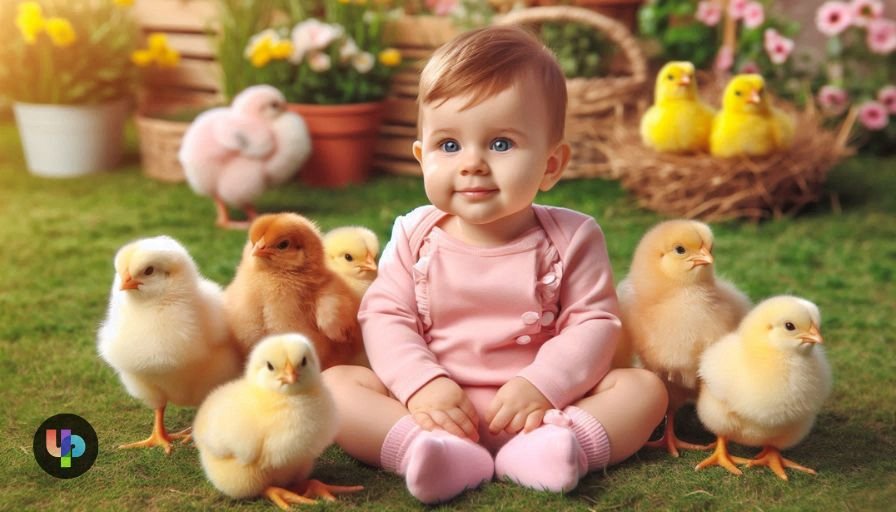Raising baby chickens, or chicks, is a rewarding and enjoyable experience, whether you’re doing it for egg production, meat, or simply as pets. The keyword “Baby:4ejkik28m7u= Chickens” reflects an interest in understanding the basics of chick care, from choosing the right breeds to ensuring their healthy development. This article will provide a detailed guide on everything you need to know about raising baby chickens, ensuring they grow into healthy, productive adults.
Why Raise Baby:4ejkik28m7u= Chickens?
Raising baby chickens offers several benefits. For one, it allows you to have control over the quality of care and feed they receive, ensuring a healthy flock. Additionally, starting with chicks rather than adult birds can be more cost-effective and allows for a stronger bond with the animals as they grow. Baby chickens also provide educational opportunities, especially for children, teaching responsibility and care for animals.
Choosing the Right Breed
The first step in raising baby:4ejkik28m7u= chickens is selecting the right breed. Different breeds have varying characteristics, such as egg production, temperament, and growth rates.
Popular Breeds for Beginners
- Rhode Island Red: Known for their hardiness and excellent egg production, these chickens are a popular choice for beginners.
- Leghorn: Another prolific egg layer, Leghorns are active and efficient, making them ideal for those focused on egg production.
- Plymouth Rock: Friendly and easy to handle, Plymouth Rocks are great for families and are dual-purpose, meaning they are good for both eggs and meat.
When selecting a breed, consider your primary goals—whether it’s egg production, meat, or simply keeping chickens as pets—and choose accordingly.
Setting Up the Brooder
A brooder is a warm, safe space where baby:4ejkik28m7u= chickens can grow during their first few weeks of life. The brooder needs to mimic the conditions provided by a mother hen, especially in terms of warmth.
Essential Components of a Brooder
- Heat Source: Baby chicks need a constant source of warmth. A heat lamp with a red bulb is often used to maintain a temperature of around 95°F during the first week, decreasing by 5°F each week thereafter.
- Bedding: Pine shavings are commonly used as bedding. Avoid materials like newspaper, which can be slippery and cause leg problems.
- Food and Water: Provide chick starter feed, which is specially formulated to meet the nutritional needs of growing chicks. Water should be clean and readily available at all times.
Feeding and Nutrition
Proper nutrition is crucial for the healthy development of baby:4ejkik28m7u= chickens. During the first few weeks, chicks should be fed a starter feed that is high in protein to support rapid growth.
Key Nutritional Considerations
- Starter Feed: This feed is designed to provide all the essential nutrients chicks need. It is typically high in protein (18-20%) to support growth.
- Grit: If you plan to introduce treats or foods other than the starter feed, chicks will need grit to help them digest these foods properly.
- Fresh Water: Ensure that chicks have constant access to fresh, clean water. Waterers should be checked regularly to prevent contamination.
Health and Monitoring
Keeping baby:4ejkik28m7u= chickens healthy requires regular monitoring and preventive care. This includes checking for signs of illness, maintaining a clean environment, and providing adequate space as they grow.
Common Health Issues
- Pasty Butt: A condition where droppings stick to a chick’s rear, blocking the vent. This can be fatal if not treated, so it’s important to clean the area gently with warm water if noticed.
- Coccidiosis: A parasitic disease that can affect young chicks. Preventive measures include keeping the brooder clean and dry, and sometimes adding a coccidiostat to the feed.
Regularly observe your chicks for any signs of distress or illness, such as lethargy, loss of appetite, or unusual behavior.
Transitioning to the Coop

As your baby:4ejkik28m7u= chickens grow, they will eventually need to be moved from the brooder to a coop. This transition typically occurs when they are fully feathered, around 6 to 8 weeks of age.
Preparing the Coop
- Space Requirements: Ensure that the coop provides enough space for your chickens to move around comfortably. A general rule is 2 to 3 square feet per bird inside the coop and 8 to 10 square feet per bird in the run.
- Safety: The coop should be predator-proof, with secure doors and windows. Ventilation is also important to prevent respiratory issues.
- Gradual Introduction: If you already have an existing flock, introduce the new chickens gradually to avoid bullying or aggression.
Conclusion
Raising baby:4ejkik28m7u= chickens is a fulfilling endeavor that requires careful planning and attention to detail. By choosing the right breed, setting up a proper brooder, ensuring a balanced diet, and monitoring their health, you can raise healthy, productive chickens. Whether you’re a beginner or an experienced poultry keeper, the joy of watching these chicks grow and thrive is unmatched.
